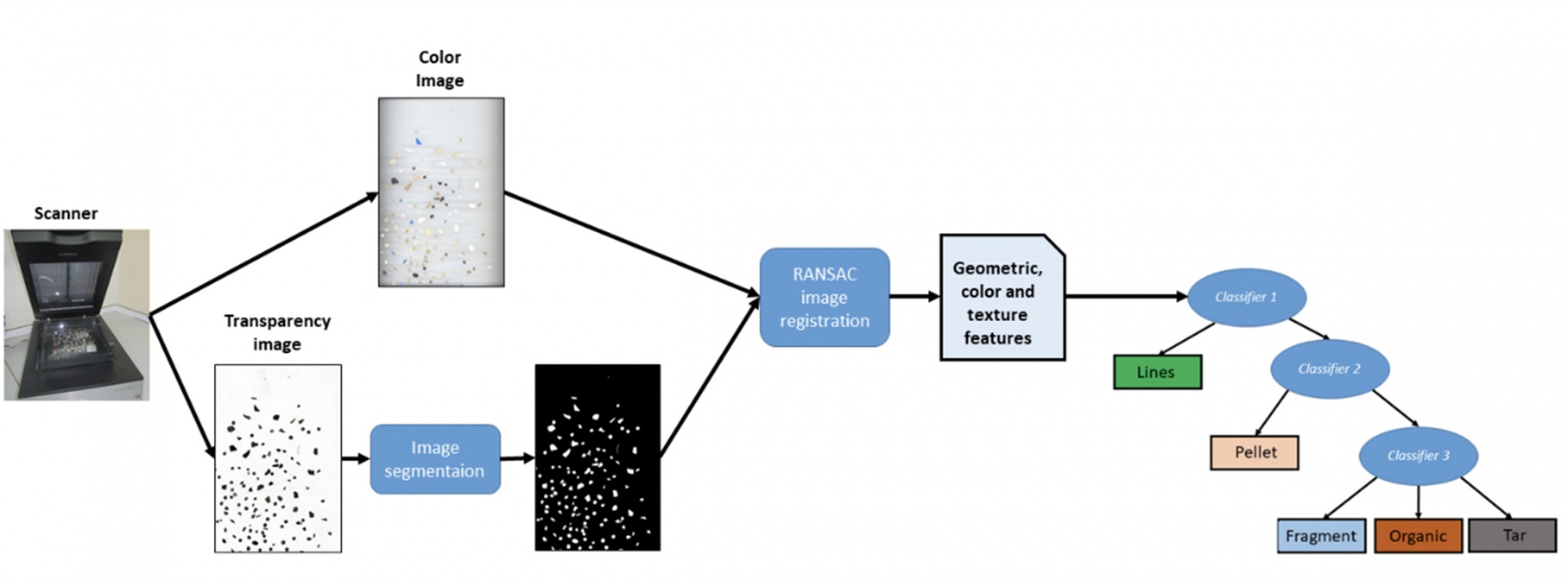It generates results in less than half the time it takes a researcher to perform the same task manually. This allows larger beach areas to be monitored more extensively and frequently.
Researchers from two ULPGC university institutes, ECOAQUA and SIANI, together with researchers from the University of Rome, La Sapienza, have developed a free software tool that accelerates the process of counting and classifying microplastics on the coasts.
The tool is based on computer vision and is able to automatically count and sort microplastic particles (1-5mm) into five different visual classes. The results are obtained in less than half the time of a researcher performing the same task manually. This means that more than twice as many samples can be processed in the same time.
Its creation represents great progress, as counting and sorting plastic particles manually is a time consuming task. The process normally requires collecting samples from beaches, and then visually counting and sorting the plastic particles present. This software tool therefore allows larger areas to be monitored more frequently and more extensively than when doing the process manually.
Every year, 8 million tonnes of plastics are dumped into the sea, where they degrade into microparticles. The Plastic breaks into minute fragments, less than 5 millimetres in diameter, that become very difficult to detect. It tends to concentrate in the areas where it is produced, but ocean currents distribute it and cause it to accumulate all over the world.
The creators of this tool are researchers Javier Lorenzo and Modesto Castrillón from the Artificial Intelligence, Robotics and Computational Oceanography (iROC) group at the University Institute of Intelligent Systems and Numerical Applications in Engineering (SIANI). These researchers have worked in collaboration with researchers from the Ecophysiology of Marine Organisms (EOMAR) group of the ECOQUA University Institute, Ico Martínez, Eugenio Raymond, May Gómez and Alicia Herrera. Collectively, they have finally developed a way to count and classify plastic waste, automatically.
The system proposed by the ULPGC researchers has been tested on 12 different beach samples with a total of 2507 particles that were manually counted and classified by an expert. These data were compared with the results of the automatic processing to assess their accuracy. The difference in the number of particles was 34 (1.4%) and the error in their classification was less than 4% for all types, except for linear particles.
This work has recently been published in the prestigious multidisciplinary journal IEEE Access, where it was stated that both ULPGC groups created a line of work in which researchers from the Italian university (Enrico Santesarti and Maria De Marsico) collaborated. The new software had similar success rates to those obtained by manual counting. This significantly reduces the time required for the researcher. Furthermore, the tool is freely available through the web to all researchers who follow the same protocol for sample collection.
Article: https://doi.org/10.1109/ACCESS.2020.2970498
Software page: http://mozart.dis.ulpgc.es/smacc/


